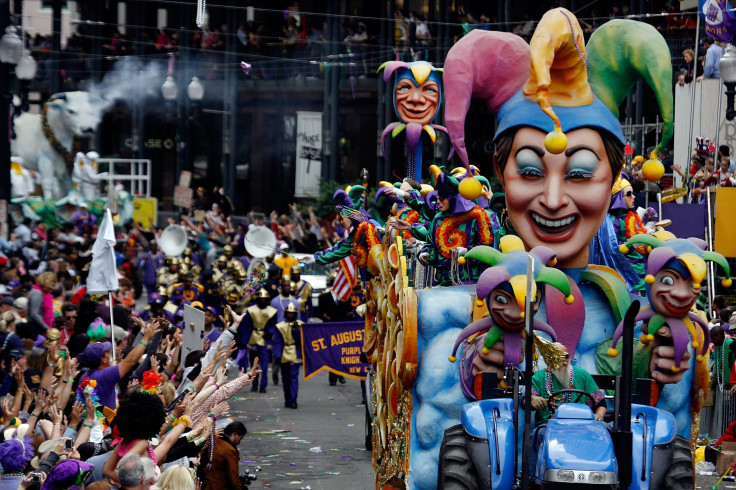Mardi Gras Facts And Trivia: 15 Things To Know About The Traditions, Holiday In New Orleans

Mardi Gras may not officially be until Tuesday, but the party has already started in New Orleans. Thousands of revelers were flooding the city this week in hopes of scoring beads, seeing parades and celebrating the holiday that precedes Lent.
But Mardi Gras is more than an excuse to drink with your friends and enjoy king cake. It's a historic cultural celebration that dates back to the 17th century.
As you prepare for the debauchery to come, take some time to read these facts and statistics about Mardi Gras and its origins, collected from NewOrleans.com and MardiGrasNewOrleans.com:
The first Mardi Gras ever took place in 1703 after explorer Jean Baptiste Le Moyne Sieur de Bienville discovered and named an area of land Pointe du Mardi Gras.
Today, that area is Mobile, Alabama.
Bienville would later found New Orleans. Mardi Gras was observed there with balls and parades.
It wasn't until 1870 that partiers would start throwing beads and other treats off their floats to spectators.
Mardi Gras has been canceled 13 times, including during the Civil War, World War I, World War II and Korean War.
No parades take place in the French Quarter because of fire concerns.
The organizations that host balls and create parade floats are called krewes.
Many krewes are named after mythological figures like Bacchus and Orpheus.
Recently a group of people founded ‘tit Rəx, which makes miniature parade floats contained in shoeboxes.
Mardi Gras typically draws more than 1 million people to New Orleans.
The official Mardi Gras colors include purple, for justice, gold, for power, and green, for faith.
For Mardi Gras, people eat king cakes, which are ring-shaped desserts with a small baby figure inside. If you find the baby, you have to buy — or make — the next king cake for your friends.
Next year's Mardi Gras is Feb. 13, but the year after that it's March 5.
Mardi Gras takes place on Fat Tuesday, so named because people eat a lot of food before fasting for Lent. It's also called Shrove Tuesday.
Mardi Gras isn't just an American tradition — people in everywhere from the Czech Republic to Brazil hold festivities every spring.
© Copyright IBTimes 2025. All rights reserved.






















